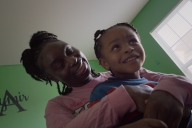You have /5 articles left.
Sign up for a free account or log in.
When authorities in November charged a group of white students at San Jose State University with months of tormenting their black suitemate, many at the institution and elsewhere asked: How could this have gone on for so long?
On Monday, the university released a fact finder's report concluding that most of the harassment was unknown to anyone in authority at the university while it was taking place, and that the victim did not want it reported.
"The victim did not want the incidents reported to anyone, including his family. The victim’s roommate and other students spoke with the victim and encouraged him to say something about the behavior of his roommates, but the victim declined to do so and asked his roommate and the other students who spoke with him to say nothing. The other students acceded to the victim’s request and nothing was reported," said the report, prepared by an outside lawyer, Mike D. Moye.
Moye was not able to interview the victim or those who have been arrested on various charges in the case -- given pending legal proceedings. But he had access to documents based on interviews with various parties, and he interviewed some who witnessed some of the behavior.
A footnote in the report suggests one reason the victim may not have wanted to report what was happening. "The victim’s roommate explained that both he and the victim had been subjected to bullying in high school and that in those experiences the victim had been reluctant to report what was happening to him. The victim’s roommate explained that the victim proceeded in those circumstances on the belief that eventually the bullying would stop (because the offenders would lose interest) or that making a report would only exacerbate the situation, so keeping quiet was the better course," the report said.
The accusations about what happened in the suite over the fall horrified many: white students in the suite nicknamed the black freshman "3/5" and then "fraction" in reference to the Constitution's treatment of slaves; they put up a Confederate flag in a bedroom and wrote racial slurs on boards in the common area; they took the student's shoes and forced him to find them; and they placed a bicycle lock around his neck.
The report found, however, that the residence life staff members knew relatively little about this, treating the Confederate flag as a minor issue (they did tell suite members to take it out of a common area), and that they didn't realize that the removal of the victim's shoes was part of a larger pattern of abuse. The report says that a residence adviser asked the victim if there were any broader problems and offered to help, but was not told to do anything.
In fact, the abuse was reported only after the victim's parents visited the suite and saw indications of what was going on. At that point, the fact finder's report says, the university responded appropriately, quickly notifying authorities, who moved to arrest those charged with the harassment of the black student. Support was offered to the victim at that time, the report says.
The harassment took place from mid-August (when students moved in) through mid-October (when the victim's parents reported it). And while many campus officials learned of the situation at that time, the president of the university, Mohammad Qayoumi, did not.
The report states: "Although the allegations involving the victim were disclosed on October 13, 2013, and reported to certain members of the president’s cabinet (vice president of student affairs and vice president of administration and finance) as early as October 15, 2013, the incidents were not reported to the university president until October 26, 2013. At this time, the resident was apprised of little more than an issue that was to be investigated. Subsequent to this report, which was delivered in a few minutes at a sporting event, the [police department] completed its investigation of the matter and recommended that four students be charged with crimes ranging from assault with a deadly weapon to hate crimes – against another student.
"The president was not updated on this development when it occurred (October 29, 2013) and, in fact, received no update on the matter until November 20, 2013 just prior to announcement of the charges to be filed by the district attorney. The president did not receive any further report from the vice president of student affairs (who made the initial report on October 26) or from the vice president of finance and administration (one his reports, the police chief, provided updates on the status of the investigation)."
By design, the fact finder's report did not outline ways that campus procedures and the environment on campus could be improved. The university has created a task force to take up those questions -- in meetings open to the public -- now that the report on what happened has been released. The report on how to move forward is expected in April.
At a briefing for journalists Monday afternoon, Qayoumi said that it was too early to say exactly what the university would do. But he pledged that San Jose State would have a "safe, welcoming and inclusive environment" for all students. And he said that, after the task force reviews the situation and offers recommendations, "the changes will be real."








